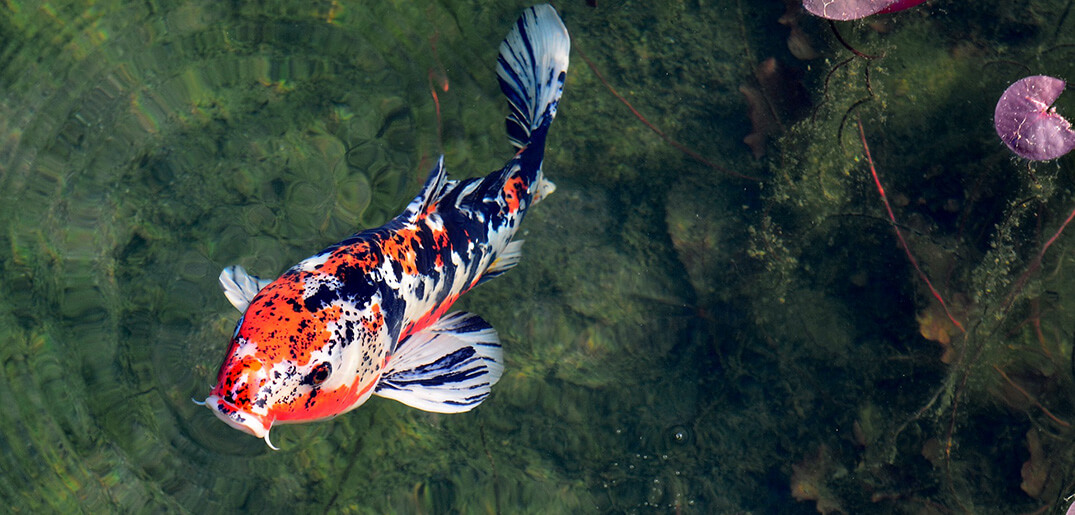Sumi are the black colored markings that sometimes appear on koi, especially Sanke and Showa. It is prized among koi breeders, particularly those that live in Japan. Among the Japanese, sumi is desirable due to its style and the specific location where it appears on the fish. Below are some ways in which these markings have changed over the years.
Why Does Sumi Appear On Certain Fish?
The appearance of sumi on fish causes excitement among hobbyists because it is an indication of the change and progress which is occurring in them. Depending on the specimen, such changes can occur at an astonishing rate. The quality of the markings is determined not only based on where they appear, but where they appear first. For example, the Shiro Utsuri, Sanke and Showa will typically have black markings which appear on the rear end which is in close proximity to their lateral line.
The markings will then spread, moving from the rear forward, stopping near the shoulder. However, among the Shiro Utsuri and Showa the markings might also appear on the head, as a separate entity which resembles an island. Japanese breeders desire balance between the head, body and rear, with sumi that is harmoniously distributed. If you buy younger koi that have heavy markings up front, but few or none in the rear, the pattern will most likely remain this way until they become adults.
Sumi Quality
It is essential to understand sumi quality. With Sanke this is straightforward, but for Shiro Utsuri and Showa greater accuracy will be needed. Just because a fish develops lots of black markings doesn’t mean it will be a show quality specimen. For sumi, the criterion is identical for all Showa and Shiro Utsuri. For these fish, it is absolutely critical to evaluate the skin and color quality.
Fish that have glossy sumi near their lateral line region on the tail are promising candidates. One way to check is to bend the fish slightly yet gently, so the sumi root will widen while the scales stretch. If the coloration remains lacquered like coal, then this is a sign that other areas of the fish will develop into a show quality specimen. However, if the sumi near the rear/lateral line has a greyish appearance, then this means the sumi may never expand forward, and will be of lower quality.
Another technique used by master koi collectors is called the test bowl. Basically, you take the Showa or Shiro Utsuri and put them in bowl and monitor them for a few minutes. While some of the fish will maintain their vibrant coloration, others will become greyish in color, and should be dismissed. Modern sumi patterns are much more sophisticated than those in the past, which is largely due to the introduction of the Magoi bloodline. Japanese breeders have also been known to experiment by mixing different bloodlines from time to time.


 Blog
Blog



